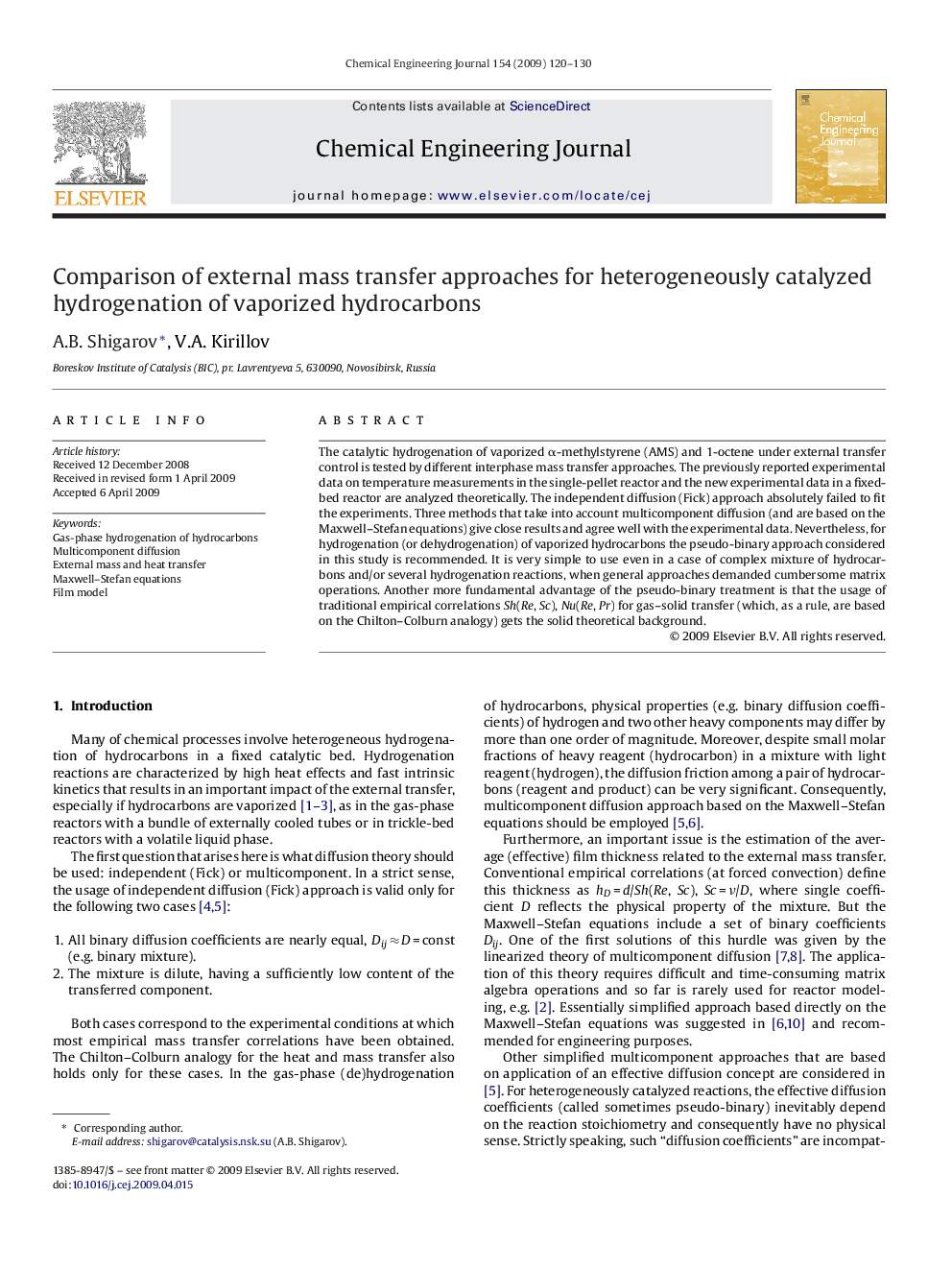| Article ID | Journal | Published Year | Pages | File Type |
|---|---|---|---|---|
| 153526 | Chemical Engineering Journal | 2009 | 11 Pages |
The catalytic hydrogenation of vaporized α-methylstyrene (AMS) and 1-octene under external transfer control is tested by different interphase mass transfer approaches. The previously reported experimental data on temperature measurements in the single-pellet reactor and the new experimental data in a fixed-bed reactor are analyzed theoretically. The independent diffusion (Fick) approach absolutely failed to fit the experiments. Three methods that take into account multicomponent diffusion (and are based on the Maxwell–Stefan equations) give close results and agree well with the experimental data. Nevertheless, for hydrogenation (or dehydrogenation) of vaporized hydrocarbons the pseudo-binary approach considered in this study is recommended. It is very simple to use even in a case of complex mixture of hydrocarbons and/or several hydrogenation reactions, when general approaches demanded cumbersome matrix operations. Another more fundamental advantage of the pseudo-binary treatment is that the usage of traditional empirical correlations Sh(Re, Sc), Nu(Re, Pr) for gas–solid transfer (which, as a rule, are based on the Chilton–Colburn analogy) gets the solid theoretical background.
